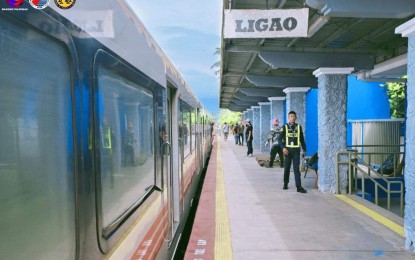
NOW OPEN. The Philippine National Railways Ligao City station in Albay province opens on July 31, 2023 for passengers going to Naga City in Camarines Sur. The government is eyeing to tap the Asian Development Bank to fund the Philippine National Railway - South Long-Haul project, an official of the National Economic Development Authority said Tuesday (March 12, 2024). (Photo courtesy of PNR Facebook)
MANILA – The government is eyeing to tap the Asian Development Bank (ADB) to fund the Philippine National Railway - South Long-Haul project, an official of the National Economic Development Authority (NEDA) said Tuesday.
NEDA Assistant Secretary Jonathan Uy told the Congressional Oversight Committee on the Official Development Assistance (COCODA) panel that they are waiting for the result of the detailed engineering to "leap frog" the project directly to bidding out both design and building.
"We are now informally discussing with the Asian Development Bank whether they will be able to glide in to the project in order to ensure continuing effort here," Uy told the panel.
"We are a go. It's a question of how early we can move forward. The detailed engineering is very critical in order to make sure that it's implementable. That's the main point and we will be efficient," he assured.
The project consists of a 560-kilometer rail line that will connect Metro Manila to the Bicol Region.
Uy revealed that the present alignment would have to be changed to come up with a faster train service.
"From the 40-60 kilometer per hour run of the current line, we are targeting about 80-120 kilometers per hour. That would mean essentially having straighter train alignments that is why the detailed engineering is very critical," Uy said, adding that they are also looking to "have better connections along the way."
With the closure of the Manila section to give way to the North-South Commuter Railway project, Uy said they are now focusing in the Calamba-Naga alignment.
Once the project is completed, travel time from Metro Manila going to the Bicol region is expected to be reduced from the current 12 hours to just four. (PNA)
